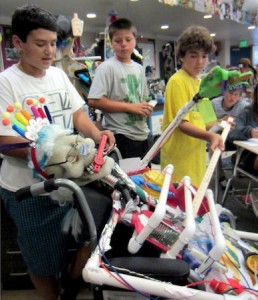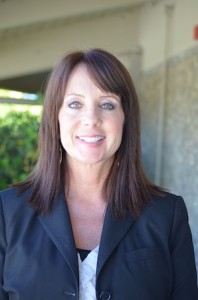
Encouraging students to talk to their teachers anytime through emails, blogs and in person, and a teacher intervention team to lift up students who are slipping in some area are two key reasons Thurston Middle School took front-and-center this month when selected for the first time as one of 21 model middle schools in the state.
“We want our students to feel comfortable having a voice,” said principal Jennifer Salberg. “If they have a question about something, a grade or something that went down, all that is okay to talk about.”
Thurston was one of only nine newly acknowledged middle grade schools that received the California Schools to Watch – Taking Center Stage award, which the state initiated almost 10 years ago in conjunction with a national program to improve plummeting academic levels in middle schools.
The school applied for the award by extensively evaluating its programs and practices in four areas: academic excellence, developmental responsiveness to the needs and interests of young adolescents, social equity and organizational support. The reward acknowledged the school’s protocol as innovative, effective and replicable as a model for other middle schools.
The administrative intervention team, said Salberg, meets every six weeks to review students’ progress and offer assistance if any child seems to be slipping through the cracks. “We want to find out how we can support the students who need an extra scoop of support behaviorally, academically, socially,” she said. “For instance, we review the data and realize that Johnny is failing two classes. How can we support Johnny? What extra scoops of support can we provide him?”
Salberg said the school’s administrators and teachers realize middle school is challenging for children and that students need to be treated carefully as they get accustomed to different teachers for each subject rather than one teacher all day, as in an elementary school. “We understand that this is a big transition time for students,” she said.
But bullying, said one seventh-grader, is a persisting problem. “I think there’s a lot of bullying going on at Thurston,” said Matteo Mesinas. “They’re just talking; it’s just verbal. It’s not physical at all.” But teachers aren’t always aware of its subtlety. Matteo said the school has an anti-bullying program where students take a pledge not to bully. “But you can’t always be there for every single thing,” he said.
Aside from that, Matteo said he likes being able to go online and print homework worksheets and make-up assignments for missed days. He also likes the online news updates about events and having classroom computers as well as monitors to watch subject-focused videos.

Eight-graders Colton and Liam Bryant agree they wouldn’t want to go to any other school. “I’ve never really been to other middle schools,” said Liam, “but it’s not like I want to go to another school. It reaches all my expectations.” Colton said the attention from teachers counts. “They always make sure you know exactly what they’re talking about and what they’re teaching,” Colton said. “It’s an amazing school. And it’s the only school in Orange County with a climbing rock wall.”
Salberg said sticking to a daily routine provides middle-school students with a needed foundation. “We want to present a consistent, unified message to sixth-graders,” she said, “and that is to be there on time and be ready.” Every student at Thurston is given a day-planner and shown each day how to use it effectively and consistently, as well as how to keep it organized.
The school’s SMART program and its new “6 for 6th, 7 for 7th and 8 for 8th” practice attracted the state’s attention. The SMART program is designed to support positive behavior on campus with rewards, incentives and special assemblies. In the daily practice program, each grade has an equivalent number of steps to take each day that are geared to cultivate confidence, organization, personal presentation and social compatibility.
In addition to the six steps that sixth-graders take to achieve self-responsibility, the seventh step for seventh-graders is to make great decisions. “We want our seventh-graders to be able to know how to treat each other with kindness in the cafeteria lunch line and out on campus,” said Salberg. For eighth-graders the eighth point is ease of achieving. “We ask the eighth-graders, “How do we support you so that when you go to high school, you’re academically and socially the strongest you can be to move forward?” she explained.
As well as the in-class programs where each grade level follows certain routines to feel confident and capable, Thurston offers extracurricular activities to keep students engaged, such as a mythology club, a spelling bee, a geography club as well as a board game group, sports and outdoor activities.
Thurston earned the Schools to Watch award due to its rigorous and relevant course offerings as well as social interchanges that give students opportunities to participate, its high-quality teachers who are accessible, go-to resources that support students’ independent ideas, and innovative school structures and processes such as the intervention team. The award is re-evaluated every three years.
California Schools to Watch – Taking Center Stage: http://www.cde.ca.gov/ci/gs/mg/stw.asp




